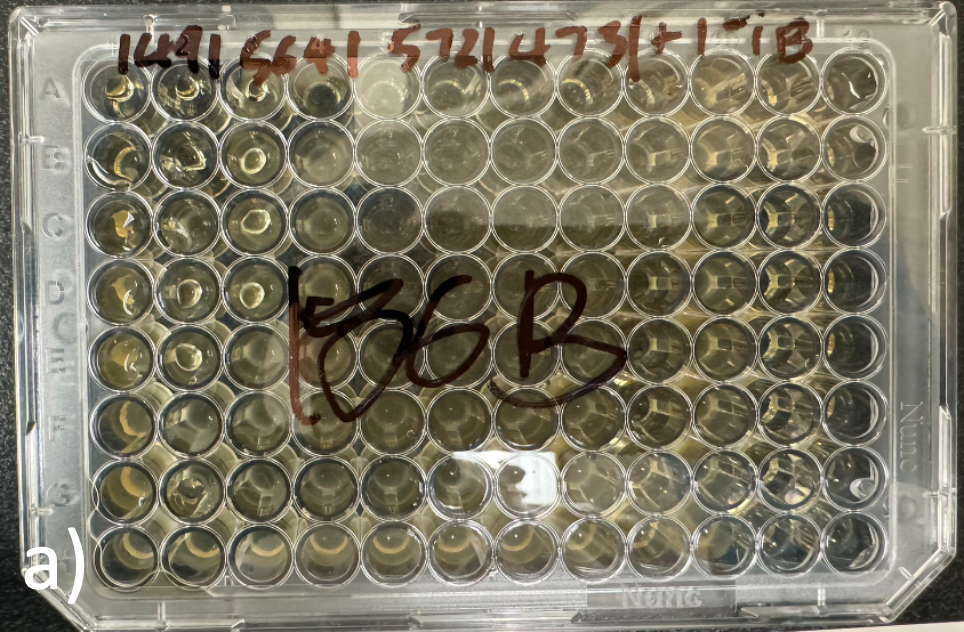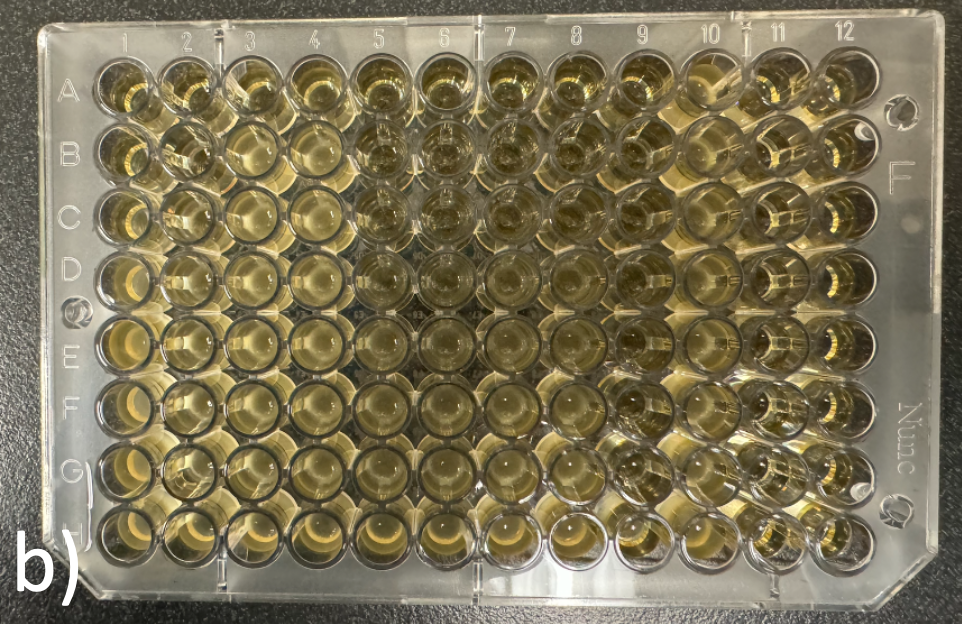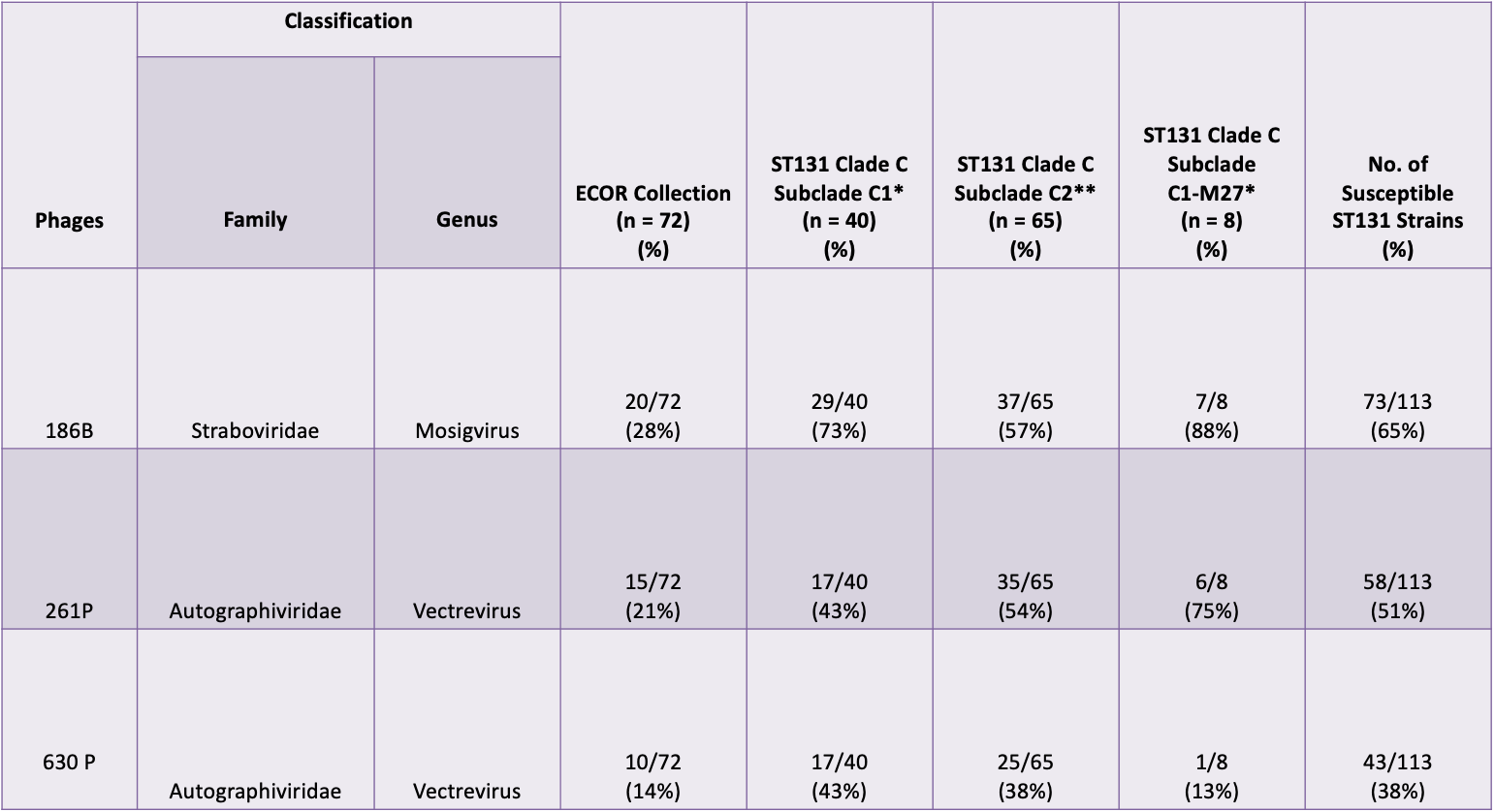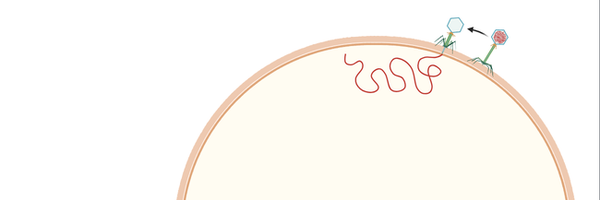Determining the Effectiveness of Lytic Activity in Phages Isolated from Municipal Wastewater against Multidrug-Resistant E. coli ST131
Vincent Liu
Grade 11
Presentation
Hypothesis
Phages isolated from municipal wastewater will have lytic activity against E. coli ST131 and not be effective against non-pathogenic E. coli. 2. Phages with lytic activity against both pathogenic and non-pathogenic E. coli may carry a specific host recognition protein that allows them to be effective against both.
Research
Sept 8.
- Read summary and introduction of “Escherichia coli ST131, an Intriguing Clonal Group”
- Summary: In 2008 Escherichia coli ST131 was discovered
- Is the predominant E. coli lineage among extraintestinal pathogenic E. coli
- Is found to have strong resistance to fluoroquinolones (a type of antibiotics to treat bacterial infection)
- This paper highlights what is currently know about E. coli ST131 (as of 2014) to help public health authorities to combat this pathogen
- Introduction:
- Escherichia Coli is a common bacteria with many different strains that infect and reside in the gastrointestinal system of humans and animals
Sept 18.
- Introduction:
- Causes diarrheal diseases and leading cause of urinary tract infections
- Need for research because ST131 is a harmful pathogen that is multidrug resistant to all forms of antibiotics
- Extended-spectrum β-lactamases (ESBL) by E. coli isolates have increased steadily over the last 20 years and this allows them to be resistant to fluoroquinolones.
- Goal is to “provide readers with a practical overview, a documented summary of the most important microbiological and epidemiological data published to date, and an indication of what remains to be discovered”
Oct. 6
- See annotated document
Oct. 7
- See annotated document
Oct. 17
- See annotated document
Dec. 5
- See annotated document
Dec. 13
Variables
Independent Variables:
- Phages used to test on E. coli ST131 and ECOR collection
- Concentration of phages used to test on E. coli ST131and ECOR collection
- The location of municipal wastewater the phages were extracted from
Dependent Variable:
- Whether the bacteriophages were able to lyse the clinical isolates of E. coli ST131 and ECOR collection
Controlled Variables:
- Time bacteria is left to incubate
- Temperature at which the bacteria is incubated
- Strains of bacteria (E. coli ST131 and ECOR collection)
- Tryptic Soy Agar used for microplate assay
- Tryptic Soy Broth concentrations
Confounding Variables:
- The variety of phages extracted from municipal wastewaters can be different based on the location of the wastewaters.
- The species of phages extracted from municipal wastewaters can be different based on the location of the wastewaters.
- Lower or higher concentrations of phages due to conditions of different municipalities’ wastewaters
Procedure
1/10 Serial Dilution:
In this study, phage and bacteria stocks will be diluted using 1/10 serial dilution. 1/10 serial dilutions were prepared in 96-well plates. Undiluted samples of phages or bacteria will be placed in the first row of the 96-well plates. All other rows will be filled with 9/10 of the capacity with tryptic soy broth. Single pipettes will be used to take 1/10 of the Phages and bacteria stocks from the first row and mixed into the tryptic soy broth in the second row. Repeated until satisfied dilution (-6 and -7) was achieved.
Tryptic Soy Agar (TSA):
Tryptic soy agar will be used in growth of bacterial colonies to kindle the growth of bacteria during incubation. 40.0g of TSA powder and 1000.00ml of double distilled water will be mixed by a magnetic stir bar at 75 degrees Celsius. Solution will be sent for autoclaving to ensure that it is sterile. Agar will be poured into petri dishes and can be stored up to 3 months if kept at 4 degrees Celsius.
Tryptic Soy Broth (TSB):
Tryptic soy broth will be used for performing serial dilutions of bacteria and phages. 30.0g of TSB powder and 1000.00ml of double distilled water will be prepared. The TSB powder and distilled water will be mixed using a magnetic stir bar at the highest stirring speed. Solution will be autoclaved to ensure it is sterile.
Microplate Phage Virulence Assay:
This protocol outlines the procedure used to determine multiplicity of infection (MOI) of phages and the host range. The 96-well plate will be separated by labeling it into sections of columns titled “Positive Control”, “Negative Control”, and “Blank Control''. 20 µl of the same phage will be added to the top row of the positive control. 20 µl of TSB will be added to the top well row of the negative and blank controls. Will perform 1/10 serial dilution on microplate. Pipette tips will be changed between each addition. Microplates of phages and bacteria inoculated in TSB will be incubated at 37 degrees Celsius for 5 hours. Blank Control will ascertain no contamination of the medium and clarity of the complete lysis supposed to be. The turbidity of the wells of negative control (standard host strain without phage) will serve as a control for the expected turbidity resulting from bacterial growth in the absence of phage. The turbidites of the wells in positive (Phages 186B, 261P, and 630P) control will serve as controls for decreasing amounts of phage and thus will show a range of turbidites from none (complete lysis) through intermediate turbidites (partial lysis) to full turbidity (no lysis). Phages (186B, 261P, and 630P) will be tested against clinical isolates of E. coli ST131 in different plates and nonpathogenic E. coli of the Ecor collection.
Observations

a) This is an example of how a labed plate would look for the phage lytic activity assay. The phage used is labled on the plate as well as each column being labled. Duplicates of each bacteria were used to reduce error, for eample, E. coli ST131 149 was used for both column 1 and 2. Column 9 is the positive control whioch is the phage as well as a bacteria that the phage is known to lyse to ensure that the phage functions correctly, column 10 is the negative control which is the bacteria only to observe that the bacteria is growing, and column 11 is the blank control which is the tryptic soy broth only to make sure that it was not contaminated before the experiment.

b) Microplate displaying turbidity (no lysis) in columns 1 – 4 and 10 as well as clear solution (lysis) in columns 5– 9. Column 1-8 : 4 different ST131 strains in duplicate. Column 9: Positive control (phage and phage host), Column 10: Negative control (host only), Column 11-12: Blank control (mTSB only).
Analysis

* Most C1 and C1-M27 strains are resistant against ciprofloxacin (fluoroquinolone), trimethoprim/sulfamethoxazole (folate pathway inhibitor), ceftriaxone (cephalosporin).
** Most C2 strains are resistant against ciprofloxacin, ceftriaxone, tobramycin (aminoglycoside)
Conclusion
Conclusions:
- Bacteriophages effective against Escherichia. coli ST131 clade C were isolated from municipal wastewater
- Different family and genus of phages displayed different host range within the ECOR Collection strains and E. coli ST131 clade C
- Different concentrations of phages showed different effectiveness of lytic activity against non-pathogenic ECOR Collection E. coli and
- Phages isolated from Municipal wastewater showed limited lytic activity against non-pathogenic ECOR Collection
Future Directions:
- Analyze the genomic data of isolated phages (186B, 261P, and 630P) to examine its role in host recognition, both E. coli ST131 and non-pathogenic E. coli.
- Find combinations of phages that work together in a phage cocktail to reduce the chance of bacteria developing phage resistant strains.
- Perform host range assay to determine the activity of phages isolated form municipal wastewaters on other MDR bacteria.
- Evaluate phage capabilities for medicinal and therapeutic use in treating MDR bacterial infections.
Application
The significance of this project is to increase the amount of research into this field and provide information and insight for future researchers regarding the effective host ranges of phages isolated form municipal wastewaters and their abilities to effectively lyse multidrug resistant bacteria, in this case being clinical isolates of E. coli ST131 without affecting commensal E. coli in the host. Furthermore, this project seeks to affirm the possibility of the use of phages in treating bacterial infections that are resistant to antibiotics in clinical settings. Currently there are no effective alternatives in treating bacterial infection other than antibiotics which are quickly becoming less effective as they are used more. The project hopes to find a stable solution to the pressing crisis of the downfall of antibiotics as bacterial strains develop resistance. This project indicates that phages will be a suitable alternative to antibiotics in treating bacterial infections that have already become resistant to most forms of antibiotics. This project also believes that through the use of multiple combinations of phage cocktails targeting specific hosts, said cocktails can limit the development of resistant strains of bacteria for phages.
Sources Of Error
Isolating bacteriophages at different times of year aswell as location of the specific wastewater can have an effect on the concentration, variety, and host range of the phages that were not accounted for in this study. Improvements can be made on this study in the future to specifically isolate phages form one location at the same temperature/time of year to keep these varibales constant.
Citations
1. Lee DS, Lee SJ, Choe HS. Community-Acquired Urinary Tract Infection by Escherichia coli in the Era of Antibiotic Resistance. Biomed Res Int. 2018;2018:7656752. doi:10.1155/2018/7656752
2. Nicolas-Chanoine MH, Bertrand X, Madec JY. Escherichia coli ST131, an intriguing clonal group. Clin Microbiol Rev. 2014;27(3):543-574. doi:10.1128/CMR.00125-13
3. Forsyth JH, Barron NL, Scott L, et al. Decolonizing drug-resistant E. coli with phage and probiotics: breaking the frequency-dependent dominance of residents. Microbiology. 2023;169(7). doi:10.1099/mic.0.001352
4. Goodridge L, Gallaccio A, Griffiths MW. Morphological, host range, and genetic characterization of two coliphages. Appl Environ Microbiol. 2003;69(9):5364-5371. doi:10.1128/AEM.69.9.5364-5371.2003
5. Bertozzi Silva J, Storms Z, Sauvageau D. Host receptors for bacteriophage adsorption. FEMS Microbiol Lett. 2016;363(4). doi:10.1093/femsle/fnw002
6. Gibson SB, Green SI, Liu CG, et al. Constructing and Characterizing Bacteriophage Libraries for Phage Therapy of Human Infections. Front Microbiol. 2019;10:2537. doi:10.3389/fmicb.2019.02537
7. Patel IR, Gangiredla J, Mammel MK, Lampel KA, Elkins CA, Lacher DW. Draft Genome Sequences of the Escherichia coli Reference (ECOR) Collection. Microbiol Resour Announc. 2018;7(14). doi:10.1128/MRA.01133-18
8. Pareek CS, Smoczynski R, Tretyn A. Sequencing technologies and genome sequencing. J Appl Genet. 2011;52(4):413-435. doi:10.1007/s13353-011-0057-x
Acknowledgement
Jenny Hyun (ACWA (Advancing Canadian Wastewater Assets) Microbiology Laboratory)
Dr. Dongyan Niu (University of Calgary)
Mawra Gohar (ACWA (Advancing Canadian Wastewater Assets) Microbiology Laboratory)
Dr. Beatriz Garcia-Diaz (Webber Academy)

